This is a page devoted entirely to Bergenia so you can see them and their descriptions all together. Click on any image to be linked straight to the item in our online shop.
Bergenia ‘Pink Ice’
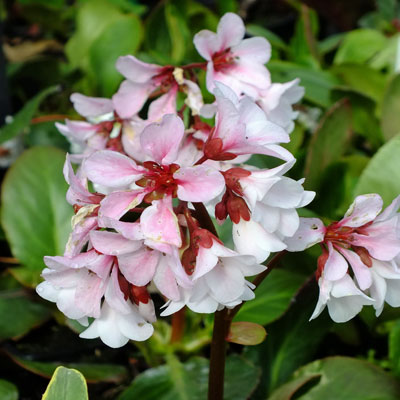
Bergenia ‘Pink Ice’
They are native of damp rocky woodland and meadows and in cultivation are remarkably easy to grow in either sun or light shade in anything but the most boggy or dry, hot sites.
They are valuable for their bold, glossy leaves that are, in most varieties, evergreen. Frequently they colour spectacularly in Autumn and Winter taking on rich red tones that make them a significant garden feature. In some cultivars and species, notably B. ciliata, B. stracheyi and B. x spathulata, the larger leaves are often lost in colder weather. The lovely twists in the leaves and rich colouring make them excellent candidates for the flower arranger. They make excellent ground cover. They make excellent alternatives to Hosta on drier and windier sites.
The flowers are largely in the white to ruddy pink range, held in dense heads in Spring. B. emiensis and its hybrids have recently brought more open heads of lax flowers into the mix. Flowering is better in plants grown in sites with more light and ample moisture.
Bergenia can be grown very successfully in pots and were once favourite edging plants with Gertrude Jekyll.
Early breeding was undertaken by Mr T.Smith of Newry, using B. cordifolia and . purpurascens. Whilst many of the original cultivars, praised by William Robinson, are now lost, breeding has continued by Arends and Klose and more recently by Eric Smith and Jim Archibald. Bergenias have now been so intensively interbred that few of the modern cultivars are assigned to any particular species.
Named after the German Botanist Karl August von Bergen (1704-60) who made an extensive catalogue of plants from his surrounding area ‘Flora Francofurtana’ Bergenia originate in Eastern Asia.
They were previously known by the name Megasea.

















































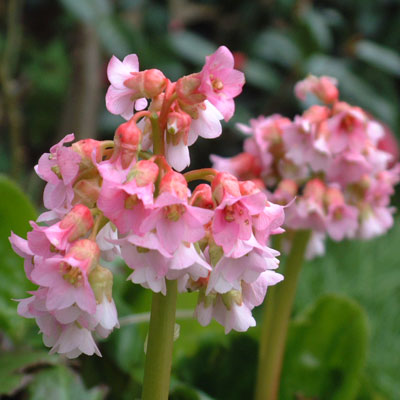
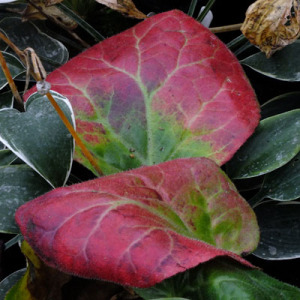

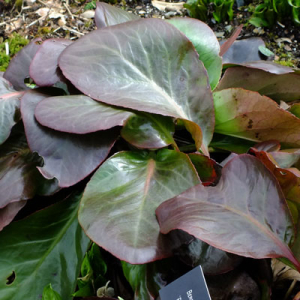
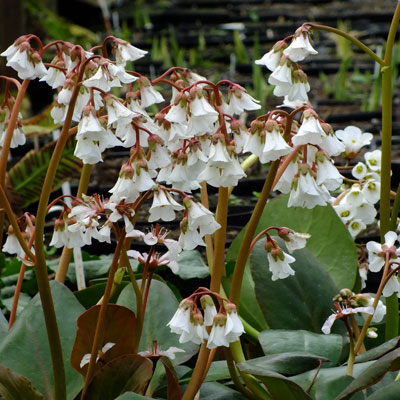
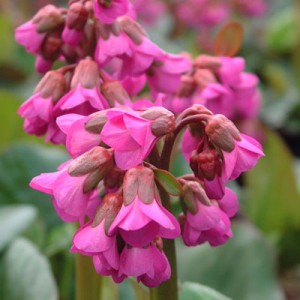
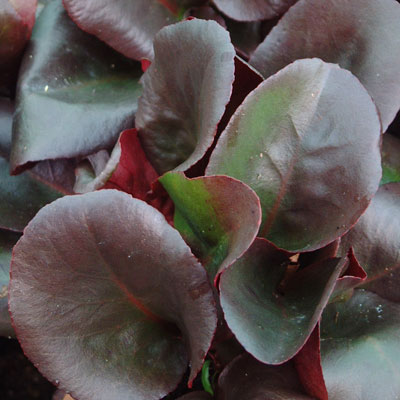
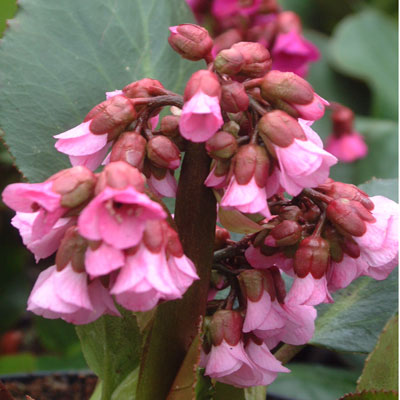
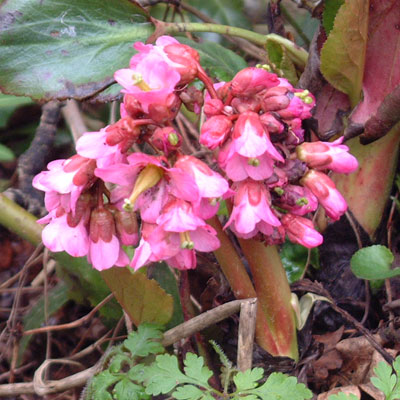

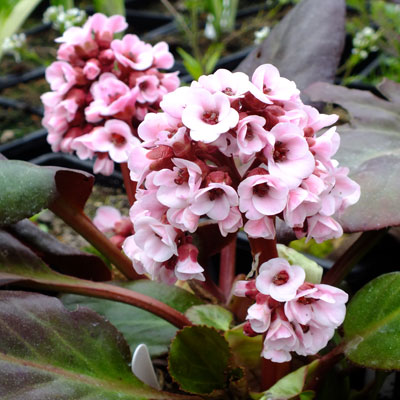

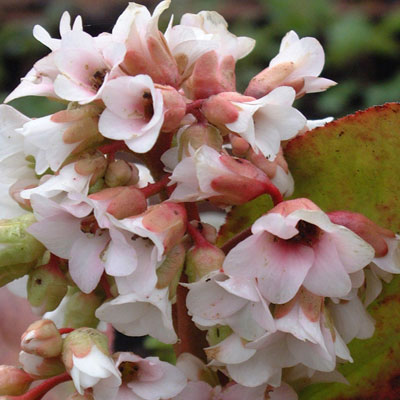
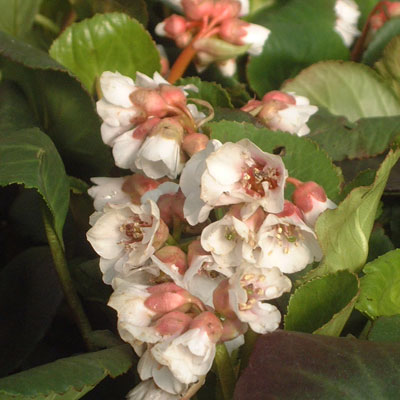
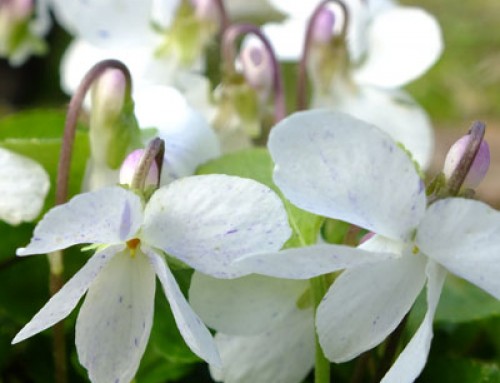

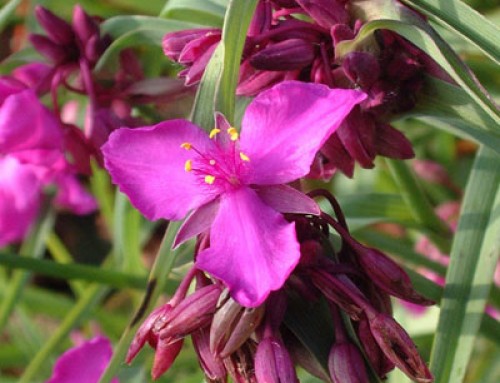
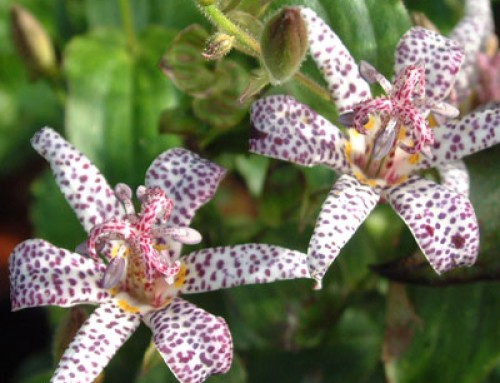
Leave A Comment
You must be logged in to post a comment.